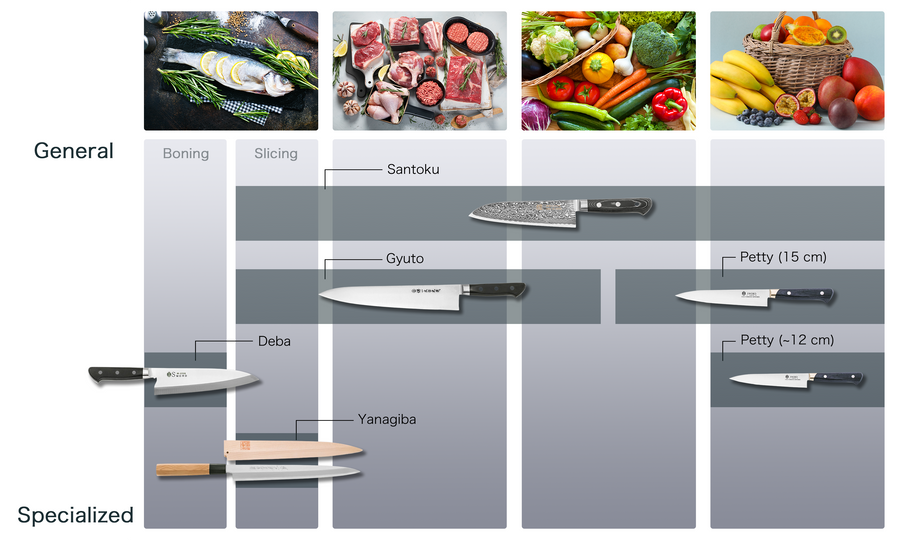Sujihiki Slicing Knives

The sujihiki or slicing knife is perfect for cured meats like proscuitto or serrano as well as carvery like brisket or roast beef. They are even amazing for sashimi preparation. Both long and easy to use, they suit any home or professional kitchen. Try one from Sakai Ichimonji Mitsuhide to meet all your slicing needs!
Applications of the Sujihiki Knife
When dismantling or breaking down a block of meat, a sujihiki knife is used to cut through the muscle. It is long, slender, and easy to use, designed to make fine movements with a slight curve and depth of motion. People also use these to thinly slice brisket, roast beef, cured meats like proscuitto and more. In some popular restaurants, people may sharpen one side of the blade and use it to slice sashimi.
How to Choose a Sujihiki Knife
Many people use a 300 mm sujihiki for cutting down large blocks, such as at butcher shops. For the restuarants which often slice meat into small pieces such as Yakiniku (BBQ) restuarants, a 270 mm model is more popular. A 240 mm knife is suitable for those with a smaller work volume or those who work with smaller blocks of meat or do thinner slicing.
Recommended Stainless Steel Knives ーOur Popular Seriesー
For people who prioritize ease of sharpening.
The blade of the 8A-N Series is made from AUS-8, one of the popular stainless steels for Japanese Knives. It is easy to sharpen and slightly tougher than other stainless steels so it is less likely to chip during use. The sharp cutting ability and edge retention of our 8A-N Series is also improved by quenching. As it's low-maintenance, this is a good choice for newcomers to Japanese Knives.
For people who prioritize long-edge retention.
The blade of the G-LINE Series is made from VG-1, a steel made from purified materials with high-skilled steelmaking technology. This leads to high hardness, sharpness and long edge retention. As it has a long sharpness life, it is recommended for long time cooks and those who do not want to sharpen so often.
For people who want "no compromises". It is easy to sharpen and has excellent edge retention.
The blade of the FV10 Series is made from VG-10, an evolution of VG-1. VG-10 offers much easier sharpening compared to the VG-1 series. Furthermore, our FV10 is manufactured by a unique tempering process. This keeps high hardness and sharpness levels, with long edge retention while also making it easy to sharpen. As a result, it leads to the best balance that stainless steel knives can have.

How to Choose a Japanese Kitchen Knife for Beginners
Japanese kitchen knives are famous for their design, history, and cutting performance. This guide will help you select the best knife for your needs.































